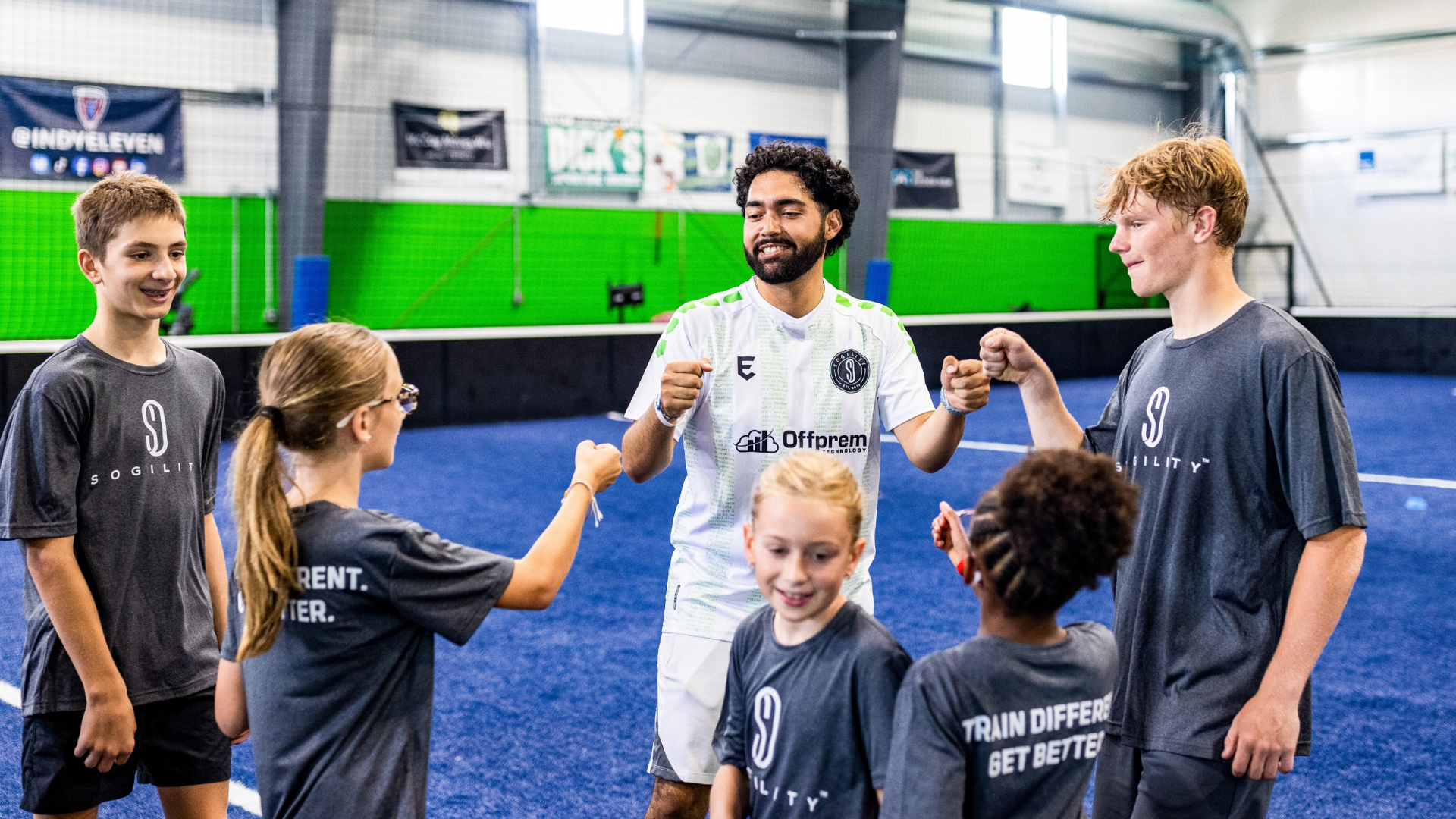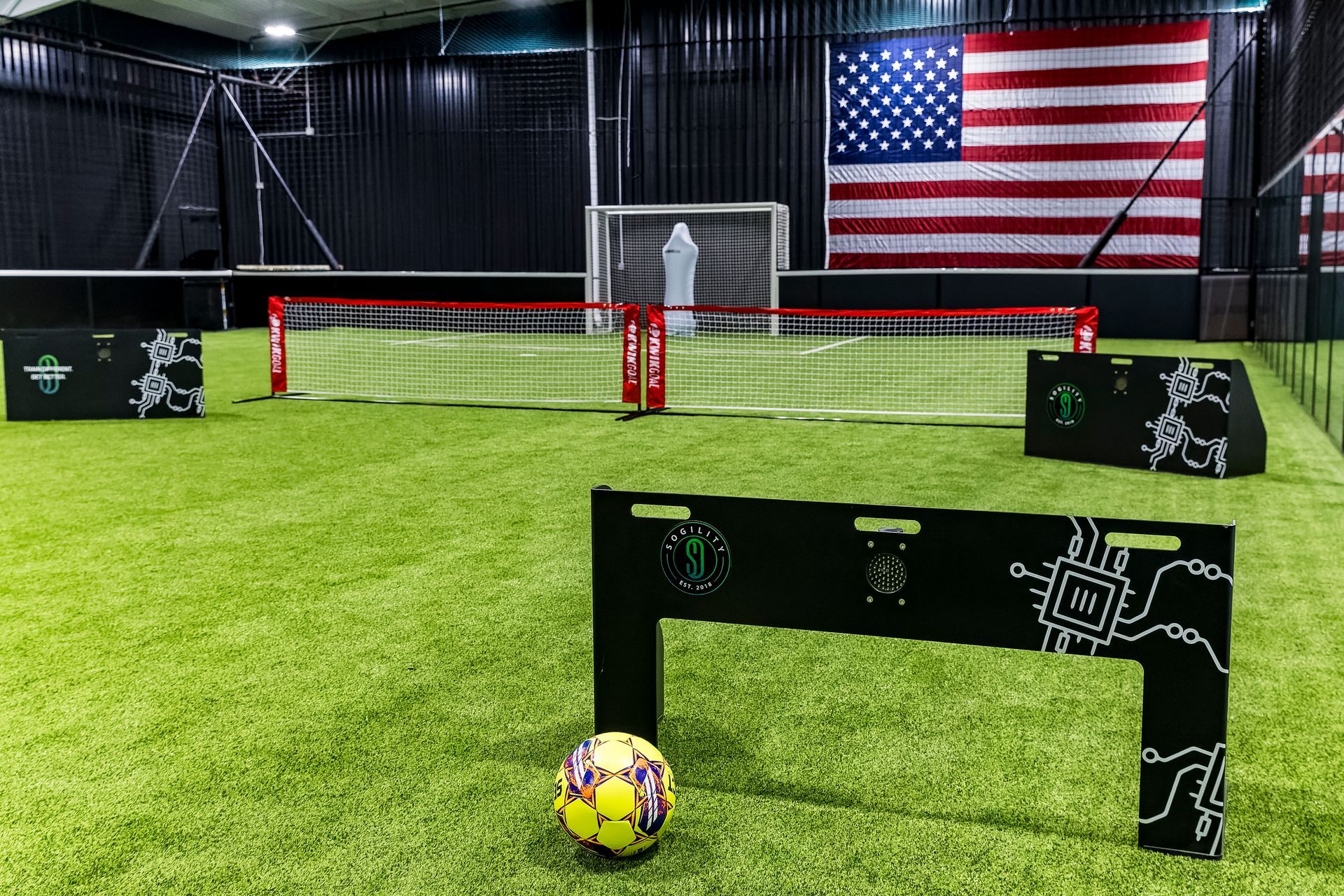September 6, 2023
Why should my youth athlete start strength training at a young age?
Why should my youth athlete start strength training at a young age? Typically when you hear strength training within the sports world people think of high-level athletes lifting weights. However, science has shown that kids begin to improve body awareness, balance and control as early as age seven.
Most kids typically sharpen these skills through being active whether playing an organized sport, playing outside, or even in a school-based Physical Education class. Strength training will not only help further the development of these skills but it also comes with a multitude of on and off-field benefits. Done correctly at a young age provides more physical benefits in the long run.
The biggest benefit of strength training at any level of development is physical performance within the sport. Increasing an athlete’s muscular strength and endurance will increase their ability to perform on the field. Putting it simply speed plus strength equals power so increasing an athlete’s strength will in turn increase their power which is necessary in any sport. More power means athletes can accelerate quicker, jump higher, and kick farther.
Another major benefit of strength training is the reduction of sports-related injuries. As an athlete goes through a strength program their body will increase blood flow throughout the body which in turn leads to healthier joints and muscles. Strength training will also help increase bone strength due to Wolff’s Law which states that if bones have a force to act against (weight lifting) the bones will over time increase density and strength which makes them harder to break. Oftentimes “prehab” exercises are also programmed into an athlete’s workout program which are typically exercises similar to a rehab program but with the goal of preventing the injury before it happens.
Whether you are a professional-level player or a youth player, being involved in a well-thought-out and executed strength program can make a pivotal difference on the field, increasing your performance and ability to be healthy for the entirety of a season.
Article by: Sean VandeWiele
, Sogility Director of Athlete Development – Westfield
For more information on Sogility’s Athlete Development Program visit sogility.net/ath-development.
The post Why should my youth athlete start strength training at a young age?
appeared first on Sogility.

At Sogility, our trainers are more than coaches, they’re mentors, motivators, and role models who help athletes discover their potential. This month, we’re excited to spotlight one of our dedicated Sogility Westfield trainers: Allan Ramirez. A Unique Soccer Journey Allan’s soccer story begins in Mexico City, where he was born and developed an early passion for the game. Unlike many players who rise through traditional youth club systems, Allan’s path looked very different. He only played one year of high school soccer and never played travel or club soccer growing up. Instead, he sharpened his skills in local adult leagues at a young age. His determination and love for the sport propelled him forward, eventually leading him to play semi-pro for multiple seasons and earn opportunities to try out for professional clubs. Allan’s unconventional path is proof that there is no single way to pursue the game, and that passion can take you far.

Holiday breaks can disrupt a player’s rhythm, but they can also be the perfect time to reset, refocus, and make meaningful progress. With the right approach, players can return to winter training sharper, stronger, and more confident—without sacrificing time with friends and family. At Sogility, we believe the holiday period is one of the most underrated training windows of the year. Here’s how to make the most of it. 1. Schedule Quick, Efficient Sessions Training during the holidays doesn’t need to feel overwhelming. Short, intentional sessions are not only easier to fit into a busy schedule, they’re incredibly effective for skill retention. Try aiming for: 3–4 sessions per week 20–30 minutes each Focused work on technique, speed of play, and ball familiarity These bite-sized sessions help maintain sharpness without burning players out. A few minutes of ball mastery or first-touch work done consistently over the break can have a huge impact once formal training resumes. Pro Tip: Pair a quick technical session with a simple fitness component—such as sprints, agility ladders, or core work—to stay game-ready as you enjoy holiday meals and downtime. 2. Take Advantage of Indoor Time Winter weather isn’t always friendly to outdoor training, but the holidays provide excellent opportunities to get creative indoors. You don’t need a full field to develop high-level skills—just a ball and a small space. Great indoor activities include: Focused work on technique, speed of play, and ball familiarityBall mastery (toe taps, inside–outside touches, sole rolls) Footwork ladders or cone patterns to develop agility Quick wall passes to improve first-touch and reaction speed Target passing using laundry baskets, tape squares, or furniture as safe targets Indoor training is especially helpful for developing control, coordination, and quick feet, skills that translate directly to better performance in small-sided play and high-pressure moments. Bonus Idea: Parents and siblings can join in, turning quick sessions into fun family challenges. This keeps training lighthearted and enjoyable during the holiday season. 3. Keep It Fun The holidays are a time to relax, recharge, and reconnect with the joy of playing soccer. Keeping training fun during the break helps players stay motivated and rediscover their creativity. Try adding: Trick-shot or accuracy competitions 1v1 games with friends or siblings Freestyle or juggling challenges Fun play builds confidence and improves problem-solving skills on the field—the type of creativity coaches love to see. Remember: When players enjoy the game, their technical development accelerates naturally. 4. Use Technology to Track Progress One of the biggest advantages of holiday break training is the ability to measure improvement in a short window of time. At Sogility, our tech-enhanced training stations are built for exactly this. With these tools, holiday break doesn’t just maintain your level, it elevates it. Players return to team training with sharper touches, quicker reactions, and increased confidence. Holiday Advantage: Most players slow down during winter break. Using tech-enhanced training gives you a competitive edge heading into winter and spring seasons. Final Thoughts: Make the Holidays Your Growth Season The holiday break is a valuable opportunity, not a setback. With short, targeted sessions, indoor creativity, fun-focused play, and Sogility’s training technology, players can make meaningful progress while still enjoying the season. Final Thought Whether you’re preparing for tryouts, winter league, or spring soccer, staying active during the holidays ensures you return with momentum, not rust.

All You Need in the Game: Master Essential Skills for Better Performance At Sogility, we know that mastering the essential skills of soccer requires more than just physical fitness — it demands speed, precision, sharp decision-making, and mental toughness. That’s why we offer Circuit Training , a revolutionary program that combines cutting-edge technology with innovative drills to prepare players for the fast-paced, high-pressure challenges of real-game play.
